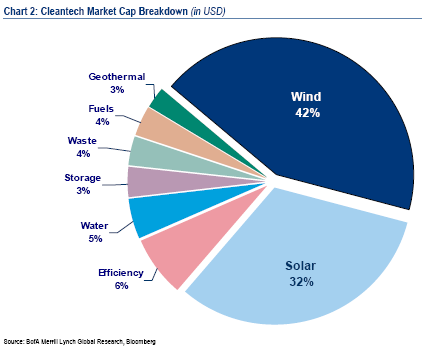Best Investment Strategies For Beginners
Post on: 28 Апрель, 2015 No Comment

I nvestors today have more investment options than were available to the average investor just a few decades ago. While having multiple options is usually a good thing, too many options can cause system overload and lead many people to avoid making decisions. Investing is a broad topic that often seems intimidating to people who are new to investing. And that is understandable there are dozens of investment vehicles, hundreds of investing strategies, and thousands of investment options. Before we let analysis paralysis get the best of us, lets take a look at investment options for the first time investor.
DIY Investing or hire a financial planner? This article is primarily aimed at someone who plans on starting their own investment plan. However, these steps can easily be done with the help of a financial planner. If you are beginning your journey into investing, you want to choose a financial planner that will walk you through these steps and be able to easily explain why each investment option is good for reaching your goals, and direct you to additional information so you can better understand how and where your money is being invested.
Defining Investment Goals
Choose investing strategies to help reach your goals.
The first thing we want to do is look at our investing goals. This will help us determine what type of investment vehicle is best for our investment. Before we go much further, lets define saving and investing ; normally saving is a short term engagement and investing is a longer term engagement.
Saving goals often include major purchases such as a car, down payment for a home, college tuition, major vacation, etc. Many traditional investments would be inappropriate for savings because they may lose value. Most savings should be kept in low volatile accounts such as a high yield savings account at an online bank or in a CD. Here is a list of high online bank interest rates that you may find helpful.
Common investment goals include longer term goals such as retirement, keeping pace with inflation, college tuition,and other longer term goals. You will notice that I listed college tuition under both saving and investing. Which group you place each of these under depends on your time frame. You can probably take on a little more risk for an intermediate length investment. For example, my daughter is 8 months old, so I can take a little more risk with college fund money right now than I could if she were 16 years old.
Find an Investment Vehicle
Are you using these investment vehicles?
After determining your investment goals we need to find an investment vehicle that meets our needs. No, Im not talking about buying a pristine 1953 Buick from the Barrett-Jackson Auction company. Im talking about something more fun and exciting things like IRAs, 401ks plans, college saving funds, brokerage accounts, and more. There are many specific investing plans that have tax breaks or other incentives that make them worthwhile to use. For example, IRAs and 401k plans are tax advantaged retirement plans that give users tax breaks either now or in their retirement years. 529 College Savings Plans and Coverdell ESAs offer tax advantages for college savings.
Open an Investment Account
Once you determine your investment goals and which investment vehicle you will use, you should open an investment account. This could be as simple as enrolling in a 401k at work (often done automatically), or starting an IRA. which takes about 15 minutes. Other options include opening a brokerage account. Opening an investment account is often as simple as providing your information, signing a form, and transferring funds into your account. But knowing the type of investment will help you narrow down the best place to open your investment account.
Stocks, Bonds, and Funds, Oh My! The Options are Endless!
There are thousands of places you can put your money, including stocks, bonds, index and mutual funds. REITs, real estate, commodities, small businesses, and more. Again, I will point to the concept of analysis paralysis and the importance of having investing goals. Before becoming overwhelmed by the sheer number of options, take a hard look at your investment goals and eliminate anything that wont help you meet your goals. You should be able to eliminate a large portion of the available options just by checking them against your investment goals.

The best investment for a first time investor. If you are a first time investor, you are probably doing well to get this far (defining your investment goals, finding the appropriate investment vehicle, and opening a Roth IRA ). If you are still overwhelmed with your investment options you may find it best to invest in a target date fund. which automatically diversifies your portfolio to a weighted asset allocation based on your target retirement date. Or, to put it more simply, a target fund is a mixture of stocks, bonds, and other investments that is designed to have more risk while you are young, then gradually transfer your funds to less volatile investments as you get closer to your target retirement date. The management is done automatically; all you do is invest and let the fund manager do the work.
Target date funds have some disadvantages. however. They are often less flexible than an asset portfolio you create yourself, and may come with higher expense ratios than a do it yourself plan. I am not advocating target date funds as the best plan for everyone, but I will say that they are a great place to get started if you simply dont know where else to start. The idea is to get in the habit of investing and get your money in the game particularly in accounts that have investment limits per year (401k plans, IRAs, etc.). Get started, get in the habit, then move your investments to a more appropriate investment one you have a better idea of how you can accomplish your investment goals on your own.
Start Investing
At this point you have it all the goal, the investment vehicle, an open account, and an idea of what you want to invest in. The next step is to get started. If you are just beginning your investments its probably not a good idea to try and time the market. Dollar cost averaging through automatic contributions is a great way to get started because it will help smooth your investment returns over the long run. You can often set up an allotment from your paycheck for 401k contributions and sometimes investment contributions to brokerage firms or other investments. Automating your contributions will make it easier to stay on track, just be sure to be aware of any contribution limits that may affect your investment planning. You dont want to contribute too much money to your investments!
Monitor and Adapt Your Investing Strategies
Ahh, you thought we were done, didnt you? Not quite. Investing and saving are two different things. Its easy to set up a savings account or CD Ladder and leave them alone until the term is up. But investing requires a more hands on approach. Im not advocating day trading, but you do need to be aware of how your money is allocated and how your investments are performing. Its a good idea to track your investments with money tracking software tools so you can see it all in one place, and it is good to perform periodic spot checks and adjust your asset allocation as necessary. My favorite software program for investors is Personal Capital, a free online investment tool .
Some people prefer to do this on an annual or semi-annual basis, or any time they have a major life event that changes their investment goals. (Maintenance is one of the reasons I recommend a target date fund for beginners; it removes one step from the equation until they can learn more about asset allocation and other investment vehicles).
Does anyone have any other helpful advice for the beginning investor?














